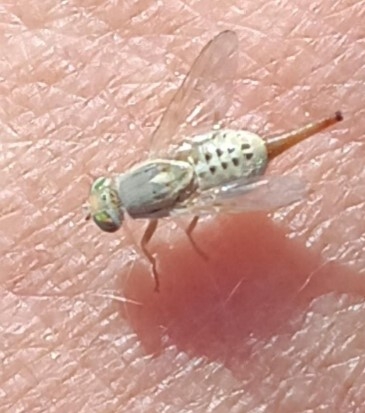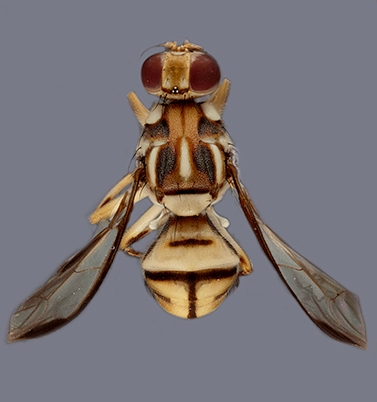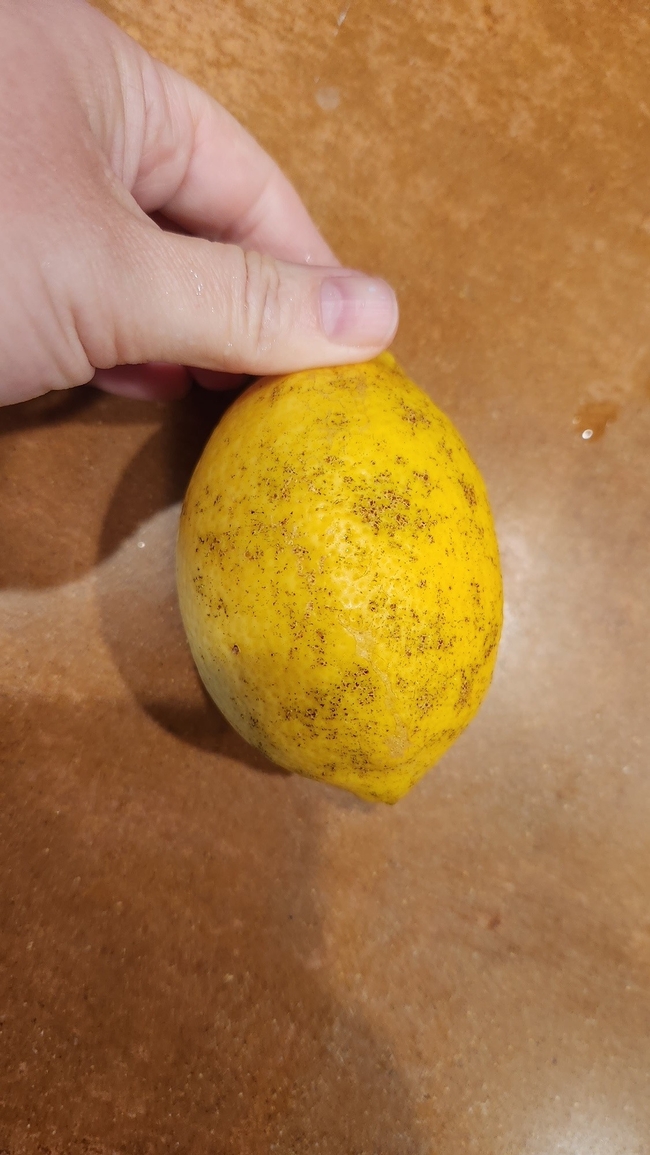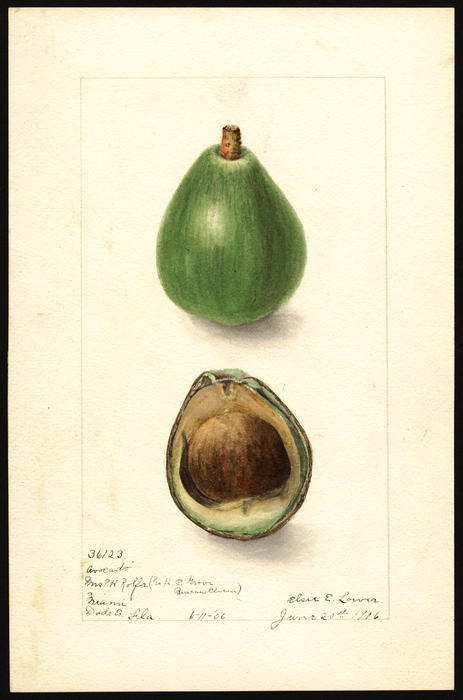
Posts Tagged: fruit
Not All Fruit Flies Are Alike
On July 30th the Queensland Fruit Fly (Qfly) quarantine was lifted in Ventura County. Qfly is part of the Tephritidae family of flies.
The Tephritidae are one of two fly families referred to as fruit flies, the other family being the Drosophilidae. Drosophila melanogaster is the fruit fly of famous biological studies to figure out how cells and genetics work. Tephritidae contain most of the flies that cause economic damage to crops because some feed on living tissue, they go after fresh fruit. To distinguish them from the Drosophilidae, the Tephritidae are sometimes called peacock flies, in reference to their elaborate and colorful markings. The Artichoke fruit fly (Terellia fuscicornis) has a limited diet, going after artichoke and presumably other thistles, so it's impact is small unless you are an artichoke grower. Spotted-Wing Drosophila (Drosophila suzukii ) which goes after soft fruits like blueberries, raspberries and strawberries can be a major economic problem, but generally Drosophilidae feed on pollen and rotting material. They are generally nuisance flies.
Some Tephritidae have negative effects, some positive. Various species of fruit flies cause damage to fruit and other plant crops. The genus Bactrocera is of worldwide notoriety for its destructive impact on agriculture. The olive fruit fly (B. oleae), for example, feeds on only one plant: the wild or commercially cultivated olive, Olea europaea. It has the capacity to ruin 100% of an olive crop by damaging the fruit. Bactrocera dorsalis is another highly invasive pest species that damages tropical fruit, vegetable, and nut crops.Euleia heraclei is a pest of celery and parsnips. The genus Anastrepha includes several important pests, notably A. grandis, A. ludens (Mexican fruit fly), A. obliqua, and A. suspensa. Other pests are Strauzia longipennis, a pest of sunflowers and a pest of blueberries. https://ucanr.edu/blogs/blogcore/postdetail.cfm?postnum=60063
Another notorious agricultural pest is the Mediterranean fruit fly or Medfly, Ceratitis capitata, which is responsible for millions of dollars' worth in expenses by countries for control and eradication efforts, in addition to costs of damage to fruit crops. Similarly, the Queensland fruit fly (Bactrocera tryoni) is responsible for more than $28.5 million in damage to Australian fruit crops a year. This species lays eggs in a wide variety of unripe fruit hosts, causing them to rot prior to ripening. The Tau fruit fly (Bactrocera tau) or pumpkin fruit fly, goes after melons and other cucurbits like cucumbers and squash. The oriental fruit fly (Bactrocera dorsalis) has been seen in more than 200 kinds of fruit and nut plants.
Med, Mex, Oriental and Tau have all been in the news lately because of quarantines to contain their spread. The bulk of fruit flies, though don't pose a threat to agriculture, including all 1,500 species of Drosophilidae and the 5,000 species of Tephritidae.
Artichoke Fruit Fly - a drosophila
Tau Fruit Fly - a tephritid
Watch Out for Fruit Flies
California inundated with invasive fruit flies
Bodil Cass
Extension Subtropics Entomologist, Dept of Entomology, UCR
California is experiencing an unusually high number of invasive fruit fly infestations. There are seven active regional quarantines in different areas of the state for four different species of exotic fruit flies in the family Tephritidae: Medfly (Ceratitis capitata) and Tau fly (Zeugodacus tau) in Los Angeles, Queensland fruit fly (Bactrocera tryoni) at the border of Ventura/Los Angeles, and four separate quarantine areas for the Oriental fruit fly (‘OFF'; B. dorsalis) in Riverside/San Bernardino, Contra Costa, Sacramento, and Santa Clara counties. A quarantine just ended following the successful eradication of an infestation of Mexfly (Anastrepha ludens) in San Diego County.
The OFF infestation in San Bernardino/Riverside is especially serious in terms of the unprecedented number of flies found and the many acres of commercial production affected. For this species, six male flies/one mated female/one larva triggers a quarantine, but here we have detected more than 500 adult flies and are still finding more, even during winter. The affected area, including more than 550 square miles, encompasses not just residential properties but an important agricultural region with commercial farms. Farmers in the area are bringing in more trained pesticide applicators, and facing crop losses, delayed harvests, disruption to integrated pest management practices for other pests, and increased costs as they act to mitigate the damage. The unfortunate proximity of the epicenter of the outbreak to agricultural production is necessitating some problem solving and adaptation of mitigation protocols as we race to stop the fly population from establishing.
The quarantine boundary is also approaching the edge of the California Citrus State Historic Park and the University of California Riverside campus, with fly finds less than two miles from active subtropical fruit and biological control research plots, the Givaudan Citrus Variety Collection, and citrus trees of historical importance. Researchers are gauging how the infestation and mitigation protocols might impact current experiments being conducted, including delayed harvest dates, and scrambling to adapt research plans accordingly.
Usually, we have one or two small exotic fruit fly quarantines per year, so the current situation is a strain on resources statewide. The number of areas invested and the severity of the OFF infestation in San Bernardino/Riverside are stretching resources thin as the Department of Agriculture pulls insect detection specialists and staff from other projects to help place more traps, enact compliance agreements, and visit residential properties. San Bernardino County is providing yard signs to help encourage residents not to move produce while the quarantine is in effect.
Exotic fruit flies are one of the most serious threats to food production in the state, with the estimated economic cost of any one of these Tephritidae species becoming established running into the $100 of millions through crop losses, additional pesticide use, and collapse of export markets. These flies are of concern because the larvae/maggots feed on fresh fruit and vegetables prior to harvest. The immature flies chew through the fresh fruit, and it rots on the tree or vine, or drops prematurely to the ground. Fruit infested with large maggots is not marketable to consumers and not fit for human consumption. They are much more damaging than other flies, like smaller Drosophila species that develop on fruit that has already matured, been harvested and is in compost. Tephritidae flies are also highly polyphagous, with some species attacking more than 100 types of fruit, vegetables, and nuts, including the major food crops produced in the state; citrus, avocado, dates, tomatoes, bell peppers, figs, grapes, cucurbits and many specialty crops are all at risk.
We have a long-standing success record of keeping fruit flies out of the state, and fully expect to achieve eradication of all the current infestations through an approach that consists of biological control (mating disruption by sterile insect release), chemical control (targeted pesticide baits), and physical control (destruction of infested fruit from the current season and restrictions on movement of fruit from infested areas). If you have questions about a fruit fly quarantine/eradication, or if you think you have fruits and vegetables infested with fruit fly larvae, call the CDFA Exotic Pest Hotline at 1 (800) 491-1899, contact your local Agricultural Commissioner, or the University's Cooperative Extension. More information specifically for growers is available at regional Farm Bureau meetings and on the CDFA website: https://www.cdfa.ca.gov/plant/PE/InteriorExclusion/current_grower_info.html#INTRO
Image of Oriental Fruit Fly
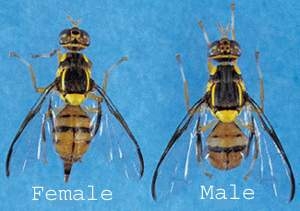
oriental fruit fly image
Staying Up to Date on Fruit Flies
Invasive Fruit Flies
California is currently experiencing an unusually high?number?of invasive fruit fly?detections, resulting in quarantines being established across numerous California counties, including Ventura County. These invasive fruit fly species – including Mediterranean fruit fly, Oriental fruit fly, Queensland fruit fly and tau fruit fly – are considered not established in California. The California Department of Food and Agriculture (CDFA), in cooperation with the United States Department of Agriculture (USDA) and various County Agricultural Commissioners, has initiated local regulatory measures to eradicate and prevent the further spread of these fruit fly species statewide.
Resources:
- CAFruitFly.com
- Invasive Fruit Fly - Guide for Growers [NEW]
- Fruit Fly Quarantine Boundaries and Maps
- Frequently Asked Questions from Industry Members
- Harvest and Crop Movement Requirements for Growers
- Oriental Fruit Fly (Over 300 crops impacted)
- Mediterranean Fruit Fly
- Queensland Fruit Fly
- Tau Fruit Fly
- Residential Treatment Information and Maps (Conducted by CDFA)
While CDFA, USDA and our local County Agricultural Commissioners will be working to educate residents on the issue in the various quarantine areas, we ask you to please encourage nearby residents to avoid moving any homegrown produce from their properties and to cooperate with agriculture officials working in their area.
CDFA Photo: Oriental Fruit Flies

oriental fruit fly five sisters
Praise the Rain, Pass the Fungicide
Although, it's probably too late for the fungicide to correct Citrus Brown Rot 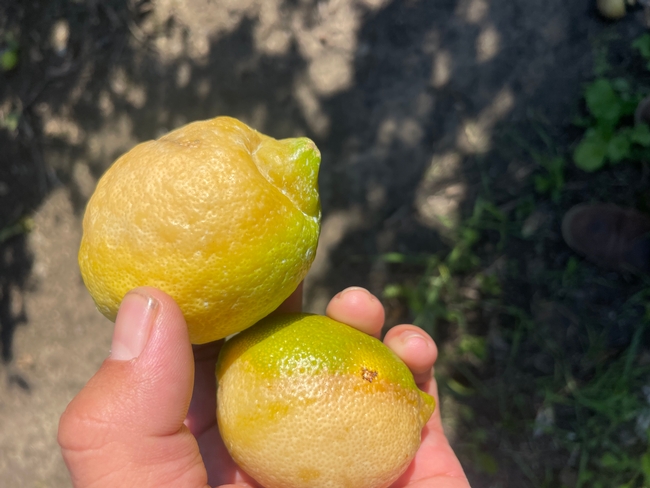
and Septoria on coastal lemons.
In normal rainfall years, a skirt spray of copper is done to prevent rain splash bringing spores of various Phytophthora species in contact with fruit. The spray is done the fall especially if high rainfall is expected that year, and can be reapplied in January/February if indeed rain has arrived. The spray is usually only up about 4 feet from the ground, rarely needed above that. But this year, there has been lots of wind and brown rot has appeared throughout tree. There has been lots of wind to spread the spores and create disease in fruit quite above ground level. Fruit on these trees is going to need to be selectively picked to avoid the infected fruit, adding to harvest costs.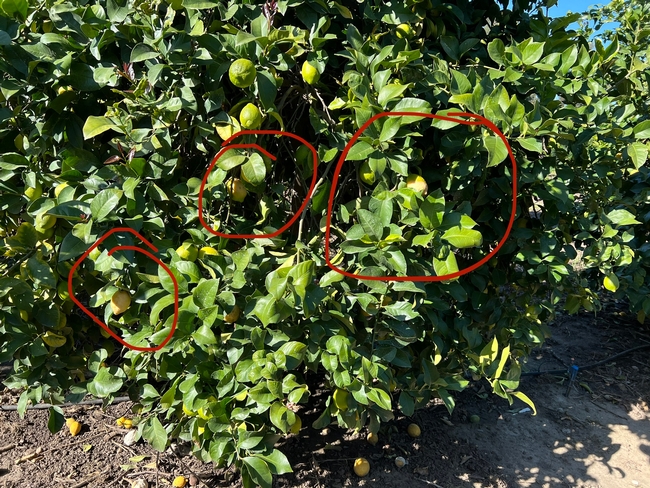
https://ipm.ucanr.edu/agriculture/citrus/brown-rot/
Septoria is less common than brown rot along the coast where a skirt spray is or used to be normal practice. This was before the drought and low lemon prices made the practice less common. In the case of septoria, a whole tree copper spray is recommended in the fall. The disease, although not unseen, is not common, so most growers would apply only a copper skirt spray for brown rot. With this 2023/2024 rain year, the disease has showed up in many orchards, and of course, it is above the brown rot spray line in the canopy.
https://ipm.ucanr.edu/agriculture/citrus/septoria-spot/
Both of these diseases are going to cause problems for growers, because once in the fruit, it's not treatable or salable.
POM ology
POM - Greek for "apples", but more generally "fruit"
ology - the study of
So pomology is the study of fruit trees. And how to describe them becomes important and pictures have been an important way of describing fruit. Worth a thousand words.
In 1886, a US agency set out to record new fruit varieties. The results are wondrous. Watch the story HERE
As agriculture in the United States transformed from domestic and local to industrial and national, in 1886 the US Department of Agriculture (USDA) embarked on an ambitious project. To help fruit cultivators protect and profit from their innovations, the agency hired illustrators to recreate images of newly developed varieties of fruits and nuts, capturing the colours, textures and shapes of each in intricate detail. By the programme's end in 1942, more than 7,500 unique, and often beautiful, images had been produced. In his short film, the Toronto-based filmmaker Sebastian Ko provides lively flipbook tour through the USDA ‘Pomological Watercolor Collection' to explore its history and legacy. In particular, Ko focuses on the contributions of some of the talented female artists who helped bring the collection to life at a time when very few jobs were available to women.
And see the pictures here: https://search.nal.usda.gov/discovery/collectionDiscovery?vid=01NAL_INST:MAIN&collectionId=81279629860007426

